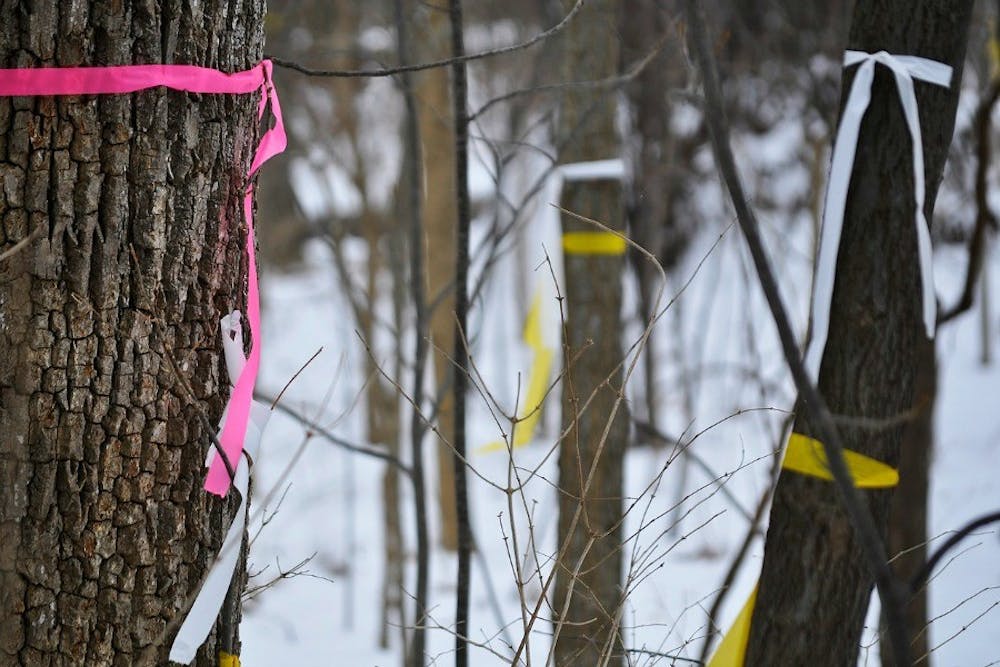Trees of Miami, beautiful trees,
What do you dream in your reveries?
…Truth, remembrance, youth, of these
You brood in your ancient reveries.
This poem, by Miami University Poet-in-Residence Percy MacKaye, is inscribed on a masonry tablet found on one of the exterior walls of Upham Hall across from Bishop Woods. MacKaye lived in a small cabin in Bishop Woods during his days at Miami in the early twentieth century. The poem stands as a memorial to the rural environment out of which Miami University was carved.
Upham Hall was built on the fringes of that little forest, known as Bishop Woods, where MacKaye lived and penned his poetry. The area carries the name of Miami's first president, Robert Hamilton Bishop. It is the last remnant of a wild nature within the confines of Miami's modern campus, and it speaks volumes about the history of the institution.
Sometimes nature teaches us more than what can be found in books, computers and classrooms. In nature's realm we find the solace that is lacking in the chaotic world of human activity, the space necessary for psychological nourishment.
Each year, new faculty and students who busily circulate through the campus may find the uniqueness of Bishop Woods communicates a small fraction of the university's history and natural charm. The birds that inhabit the trees are given a sanctuary in this modern world of vanishing natural habitat. One enters this place with a kind of reverence that is not to be found elsewhere on Miami's campus.
The Natural Areas Committee, now in the stages of developing changes to Bishop Woods, will soon be acting upon their ideas for the future of this special place. Hopefully, the result of these changes will be sensitive to Miami's heritage rooted in the natural beauty and freedom around us, without the stamp of human will. Once the changes are made, we may lose a significant portion of the 'dreams' and 'reveries' pointed out to us by poet Percy MacKaye.
Bishop Woods represents a tiny microcosm of that wild and beautiful nature which sustained the first nation of Native Americans whose name Miami University adopted. Efforts to manicure and control nature merely remind us of our unsavory use of power against the natural environment and its peace-giving qualities that prove to be a perfect balance to bricks, mortar and sidewalks.
Historians tell us that everything changes, but preserving the best of our past for the benefit of future generations is a choice that we can make. The human race has been altering the planet's environment at an alarming rate during the past two centuries since Miami University was founded. Bishop Woods has, until now, stood as Miami's testament of natural preservation. With all due respect for the Natural Areas Committee and its deliberations, one wonders if the proposed changes to this area will be worthy of the return of springtime and the celebration of Earth Day, 2015.
Dr. Jerome Stanley
Emeritus, Miami University

